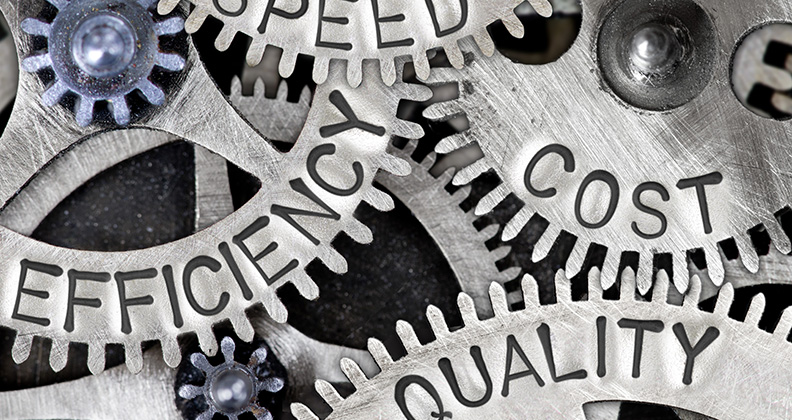
Editor’s Note: Some ideas are worth repeating. We dipped into the archives for this passage, which was excerpted from the 2006 article “Product Development and Procurement Professionals Create the Competitive Edge in a Slowing Market” by John A. Engelhardt, Knowledge Enterprises.
From a Straight Line to a Circle
Although concurrent development has been touted for decades as the new paradigm, few companies have truly embraced it, especially in the medical device markets. In fact, a term is needed to describe an optimally efficient model of development. For sake of illustration, let’s call it concurrent commercialization. In this new paradigm, all elements of commercialization are engaged simultaneously, beginning at the concept stage. A new set of criteria accompanies the design process from the idea to the patient. At the napkin sketch stage, the following questions are asked and answered, and then continuously re-asked and re-answered until the product is on the shelf.
- What is the part made of?
- Do more cost/time effective alternatives exist?
- How is the part to be manufactured?
- Is this the most cost/time effective method?
- How is the part to be dimensionally validated?
- What is the most cost/time effective method of doing so?
- Can alternative methods eliminate time and cost without compromising quality or function?
- What is the earliest and broadest regulatory strategy that can be applied to the part?
- Can we make design changes to optimize the entire process without compromising quality and function?
- Have the changes fundamentally affected the commercial features and benefits? The regulatory disposition?
- How does my make/buy decision affect all of the above?
Some of the above can be answered by advanced development tools, such as design and manufacturing simulation packages. Others will need to be the subject of numerous iterations and reduction to prototypes.
Some product development engineers will look at this list and say, “It’s not my job to decide the cheapest way to make a part.” Some purchasing people will comment, “Just give me the final production prints and I’ll find the best way to get it manufactured.” This new way of looking at life turns the straight line development system back upon itself in a circle in which each element of the process is integrally and continuously involved from nearly square one. The image below shows the relationship between the disciplines in the concurrent commercialization model.

You will note that the current process mandates R&D and marketing together to be central to the management of the process. This is essential in order to create and maintain the original specifications through multiple iterations.
Note also that the concurrent process includes direct and simultaneous dialogue with purchasing. This is to provide continuous feedback regarding the most optimal alternatives that might be available to the process.
In the concurrent process, delays are noted early and can be anticipated and avoided. By constant communication of design evolution, optimization can be implemented by all parties involved. The result is better AND cheaper AND faster.
It has been our observation that most successful concurrent development programs include clinical evaluations after each critical interaction, as well as a dedicated pilot production process.
Changing How You View Technology Improvements
Most everyone in the development process is excited about new technology. The reality of today is that the system can no longer abide by technology for technology’s sake. To find a stronger or more biocompatible material or a sterilization process that zaps more microorganisms, or a plastic that can withstand more autoclave cycles, are all noble endeavors, but you will herefore be asked how the “system” can afford such improvements. The ability of your organization to best its competitors will not so much be measured by driving improved technologies to market, but by doing so under the most favorable metrics.
Becoming Business Critical
Your value inside your organization is proportional to your contribution to its corporate directives. While research and development and supply chain management have perhaps in the past seen themselves outside of any direct contribution, the future does indeed belong to them. By streamlining the commercialization process, speeding time to market, innovating at increasing cost efficiency (and with zero defects), you will more directly ensure that your company’s strategic and financial directives are met, its place in the increasingly competitive market environment assured and your place in the organization secure as critical to its ongoing success.




